
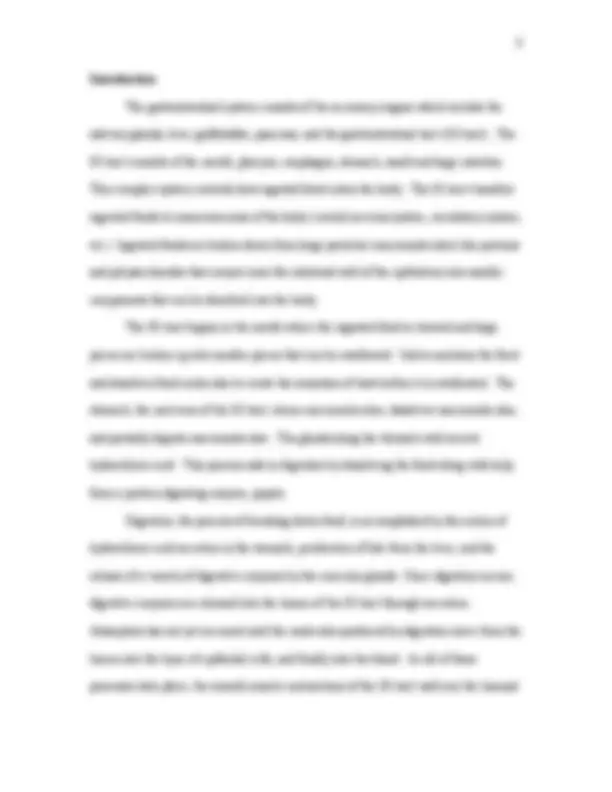
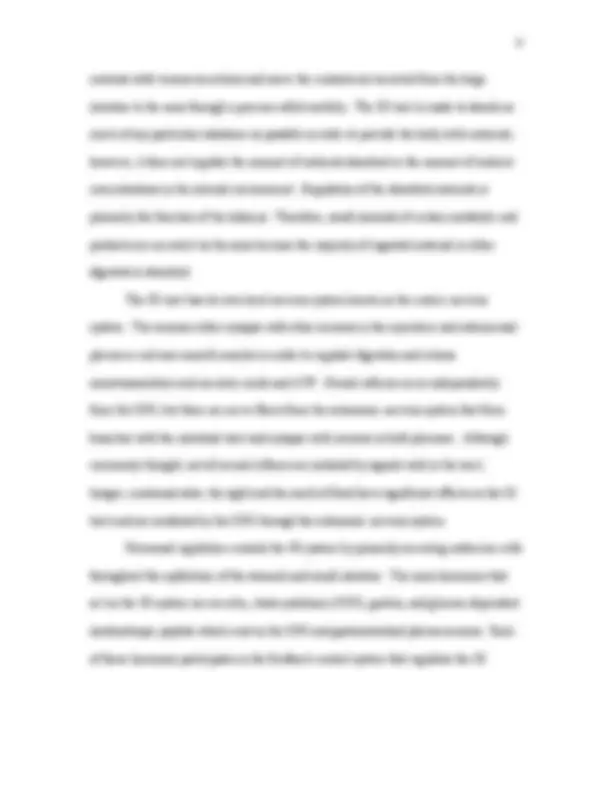
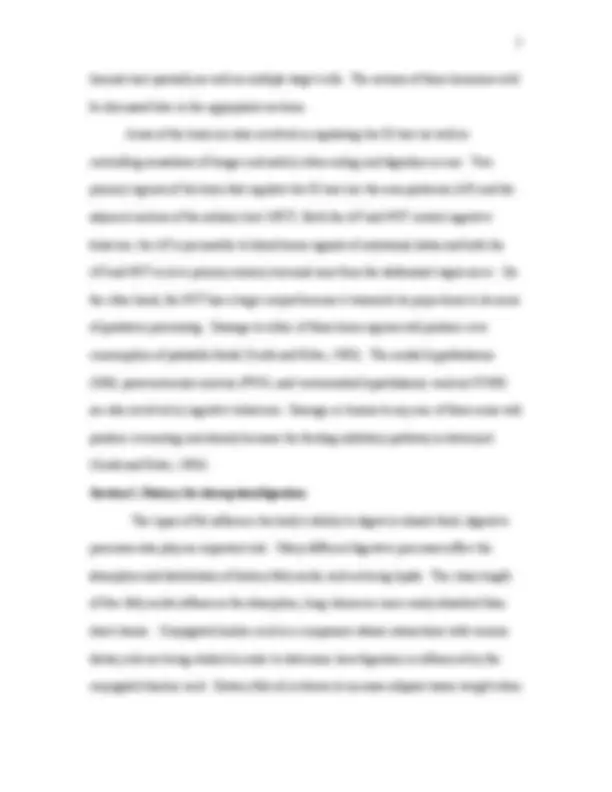
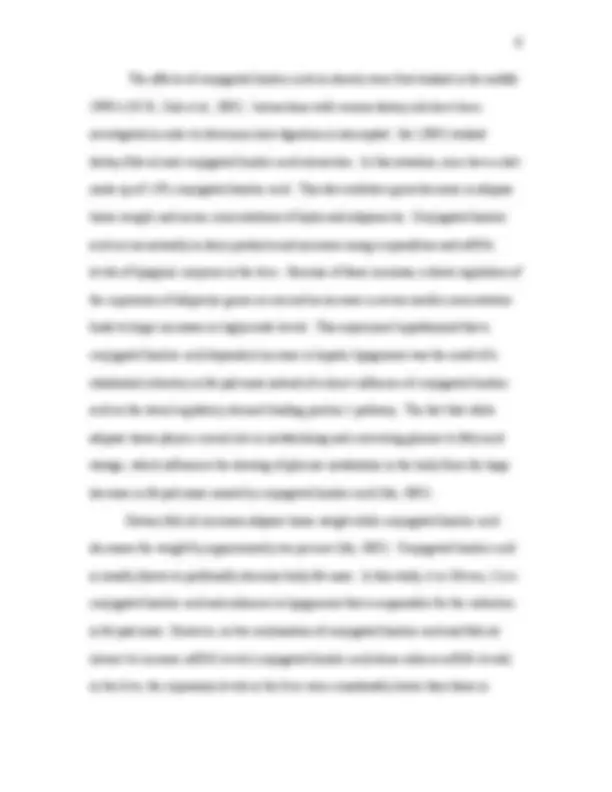
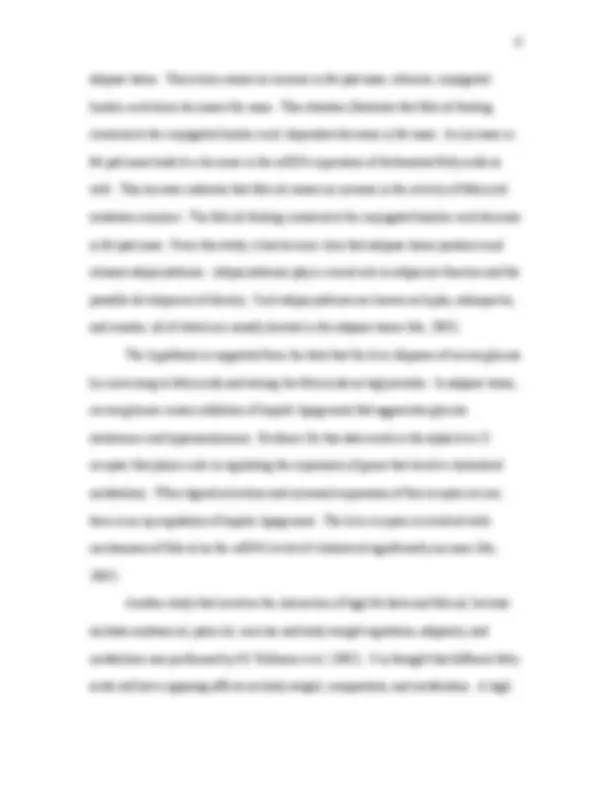
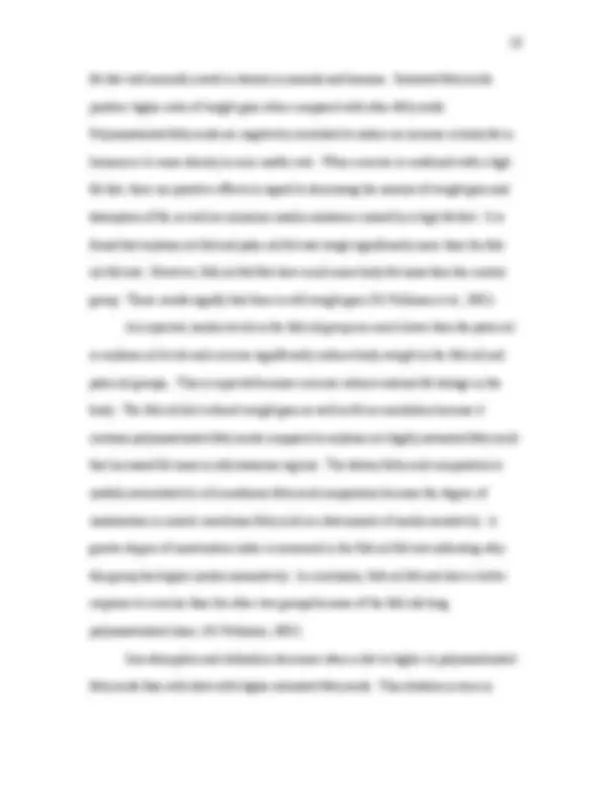
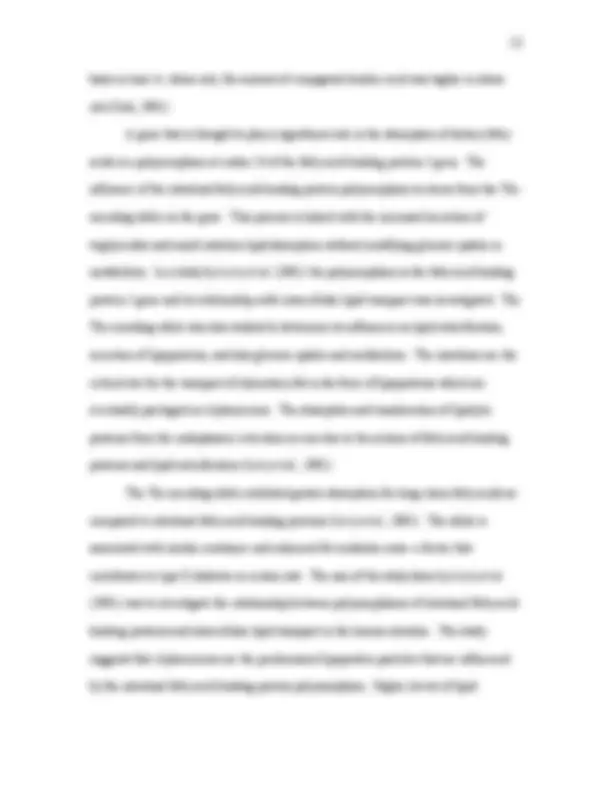
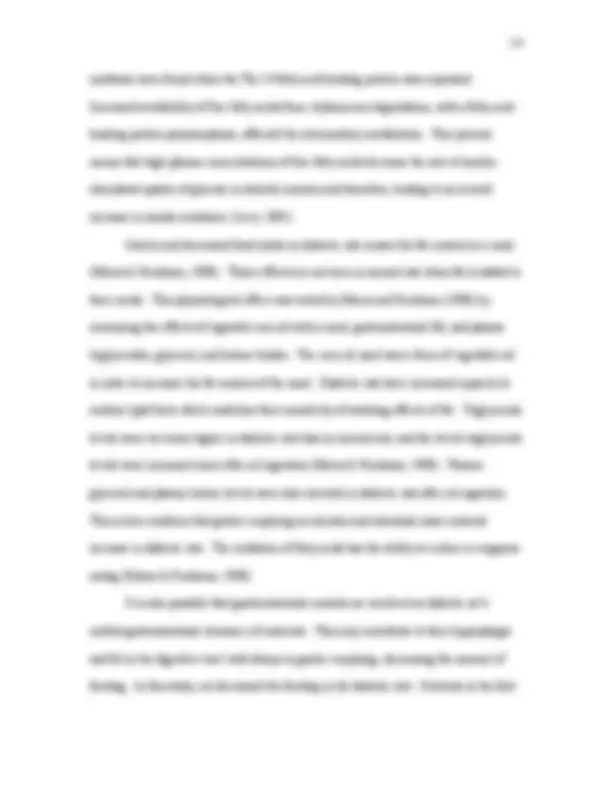
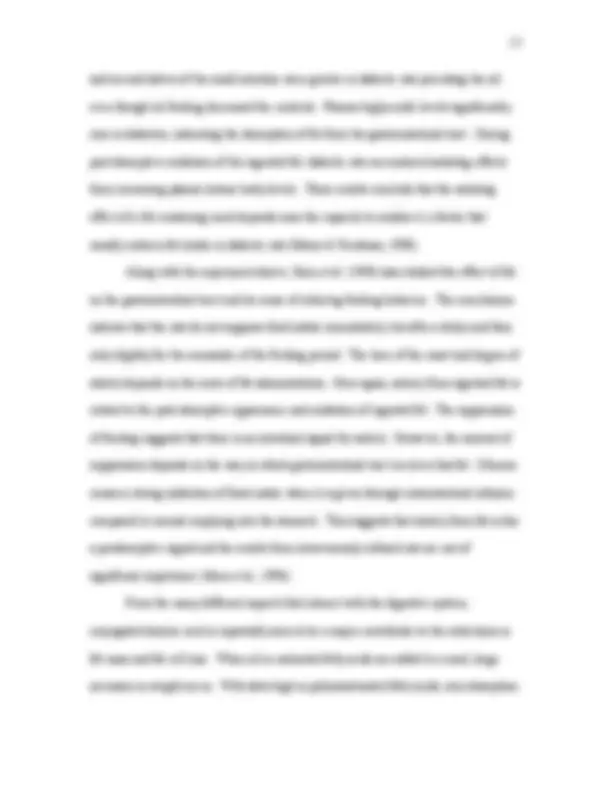
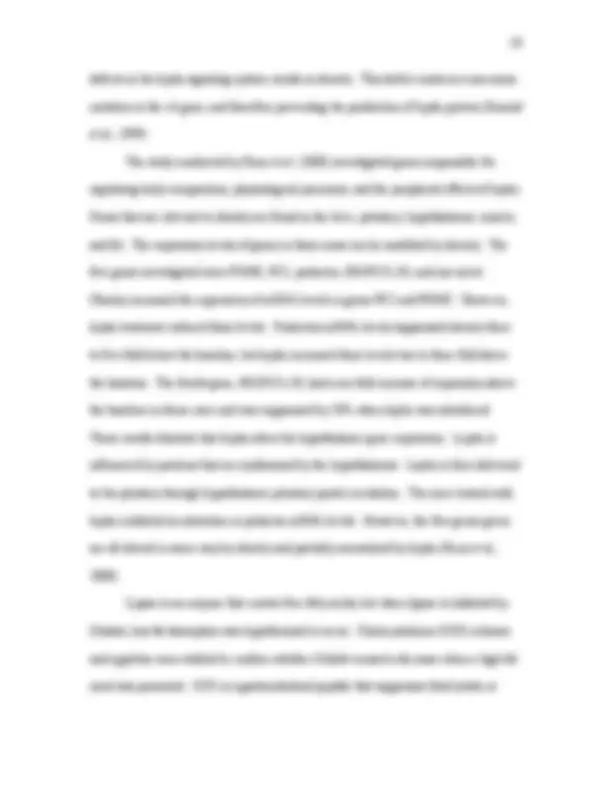
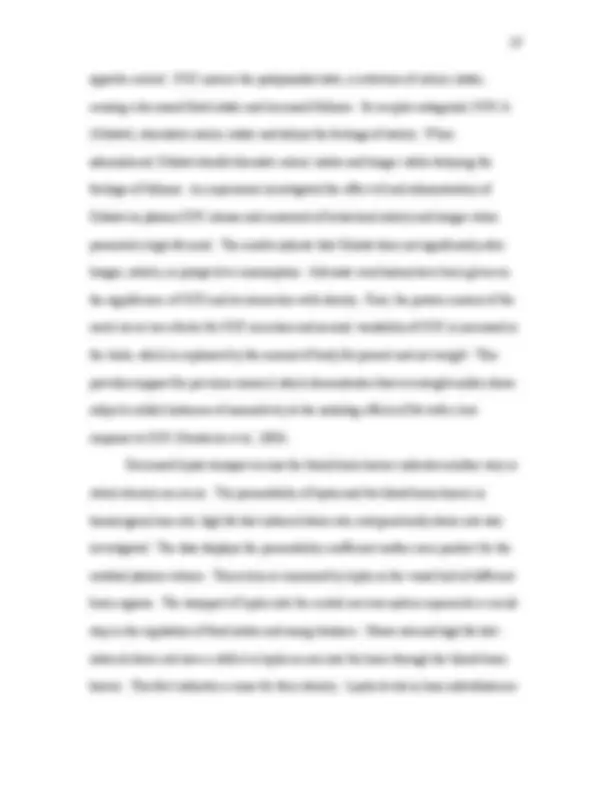
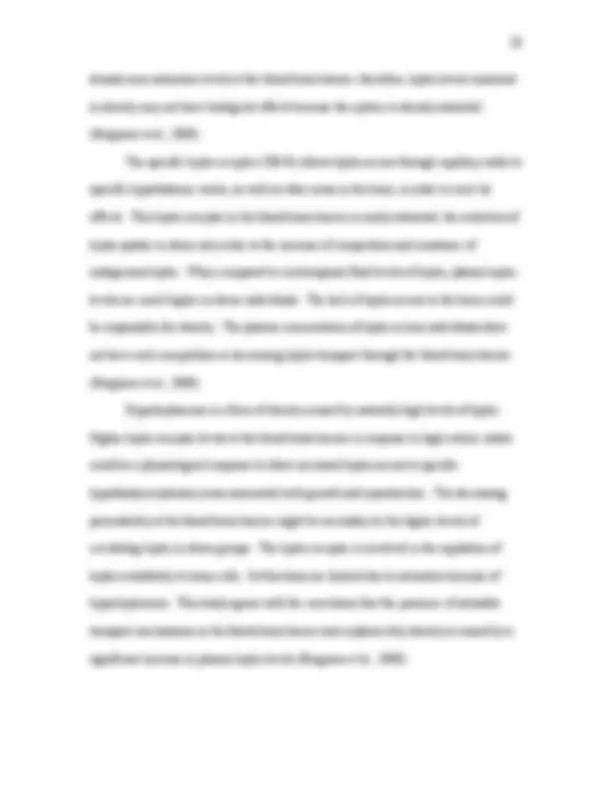
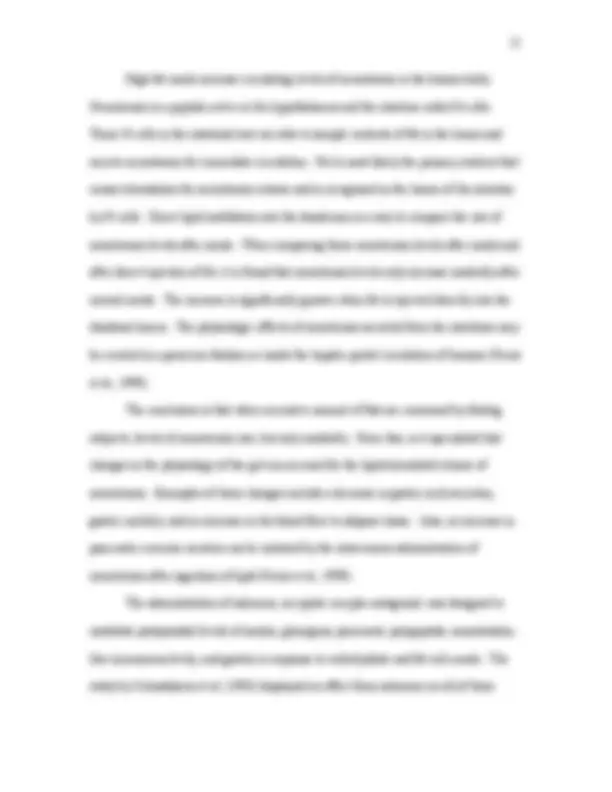
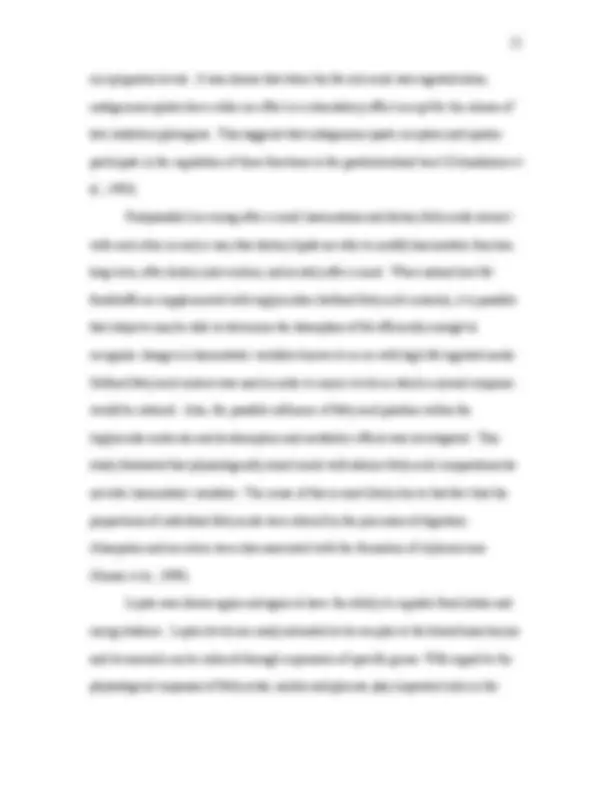
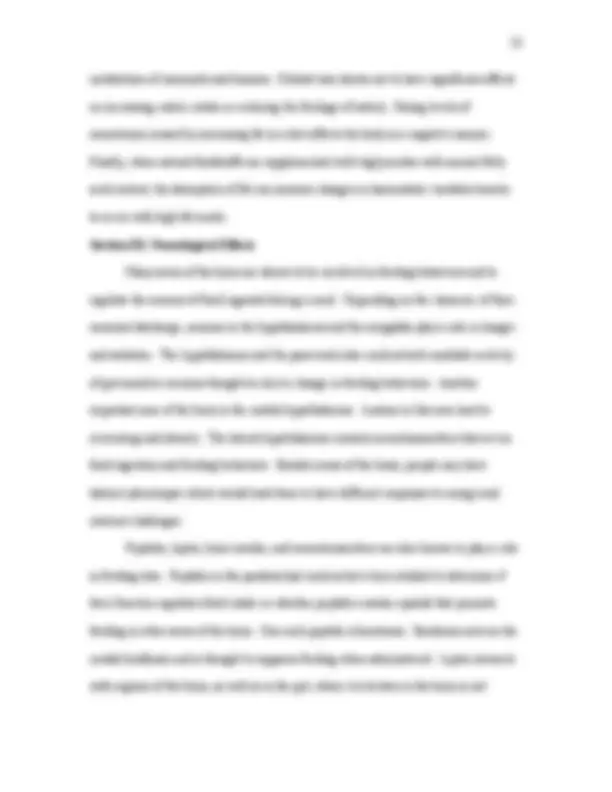
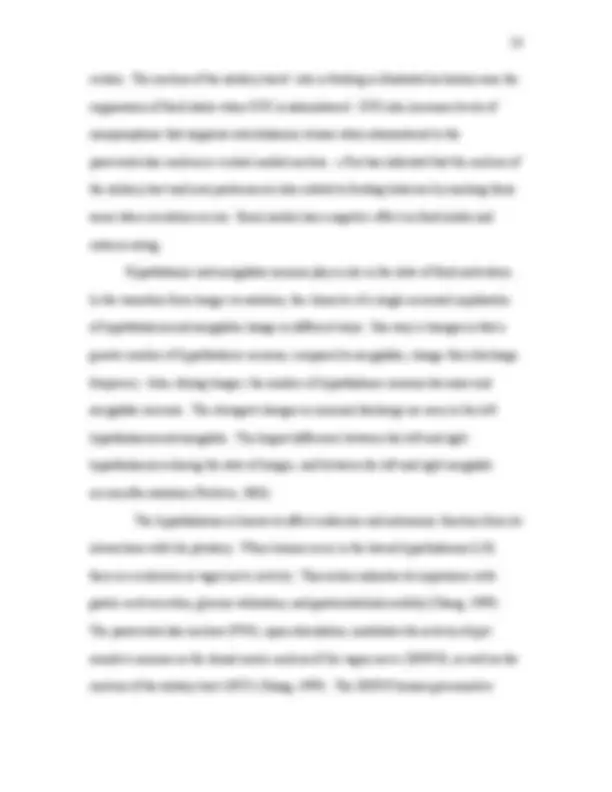
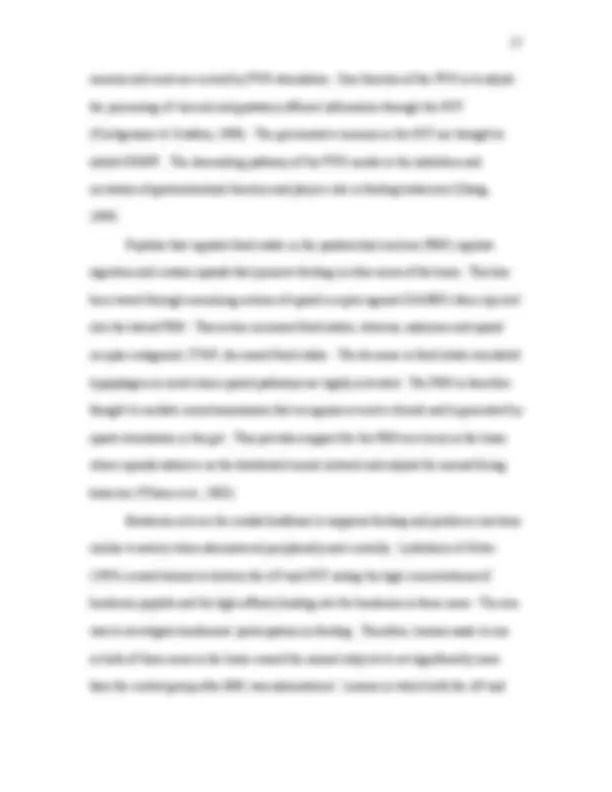
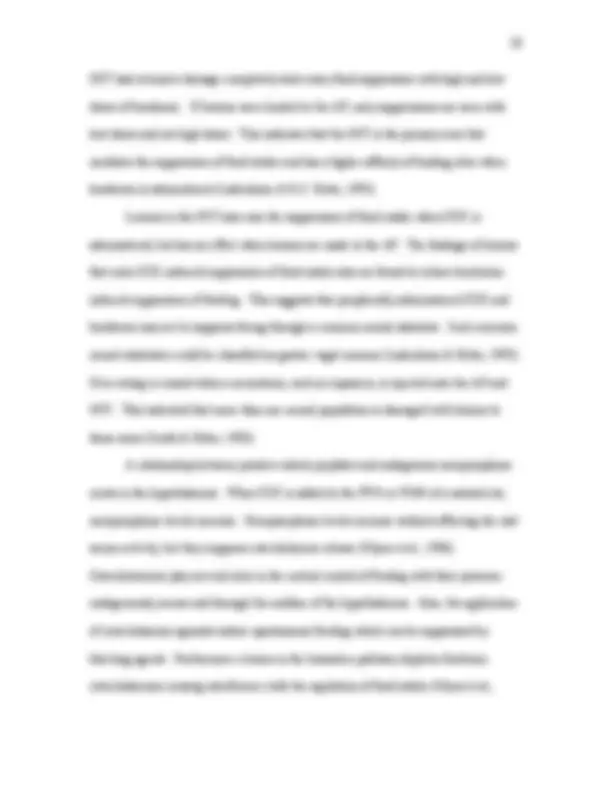
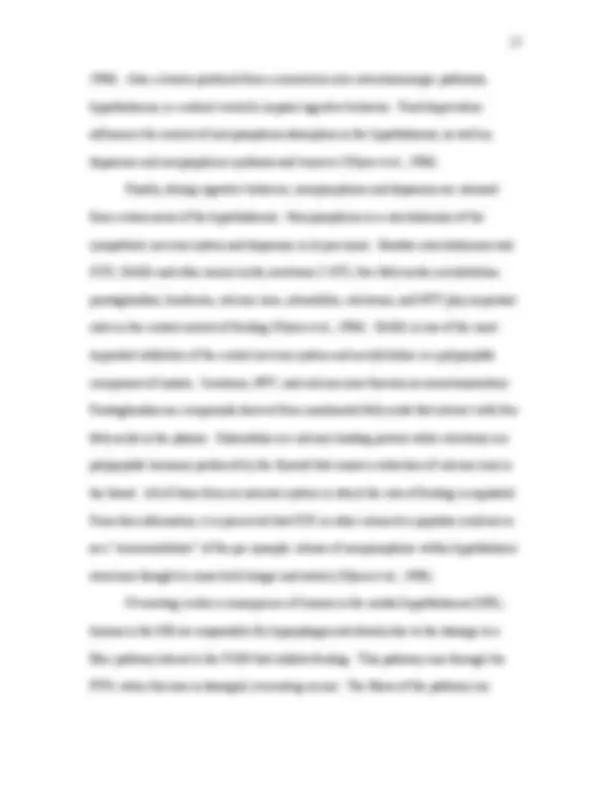
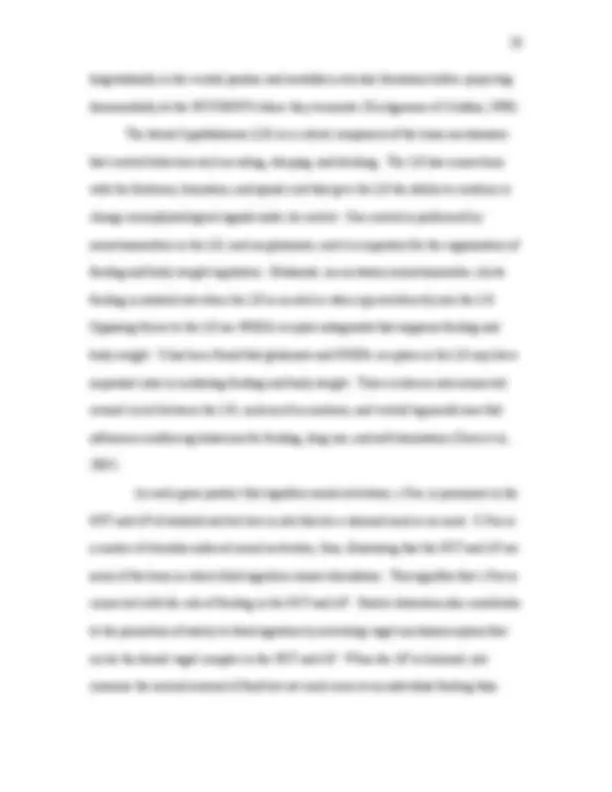
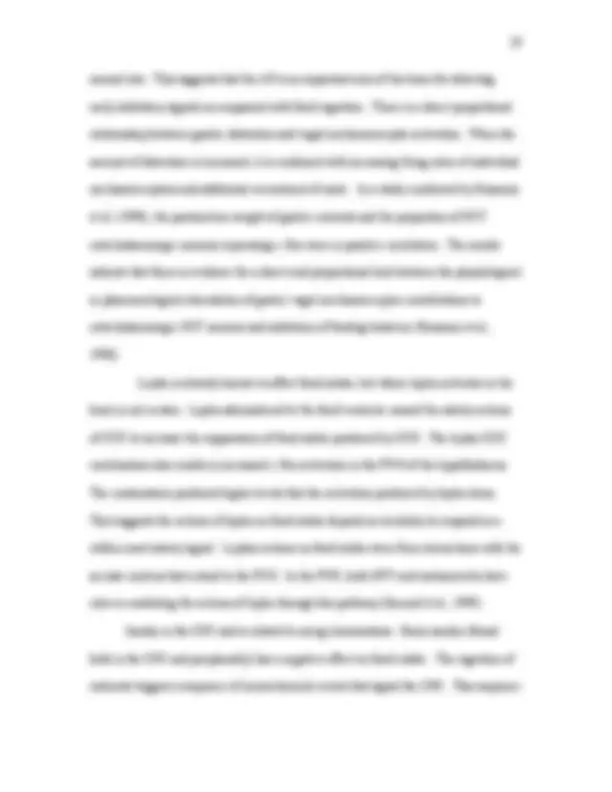
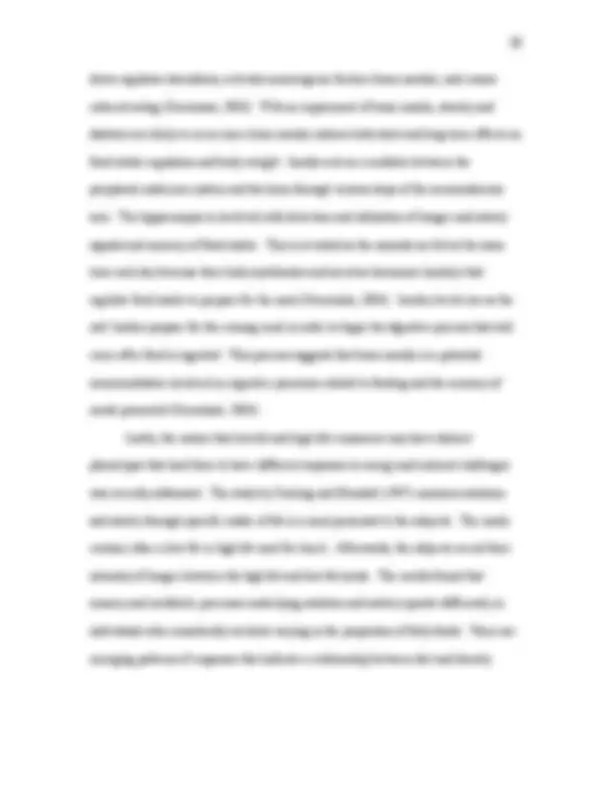
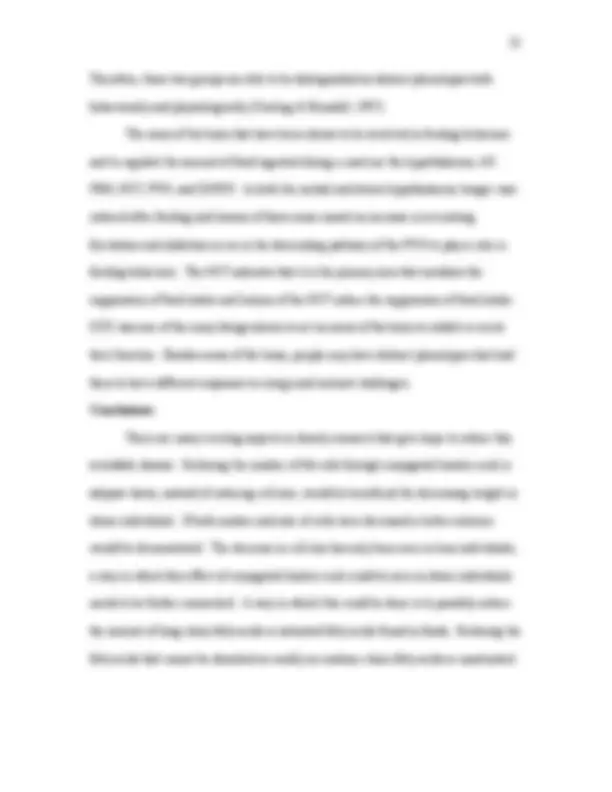
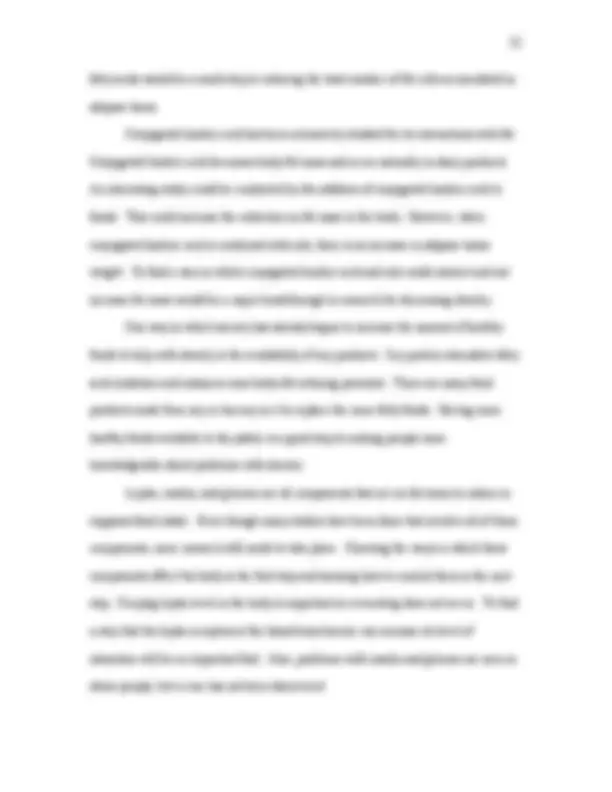

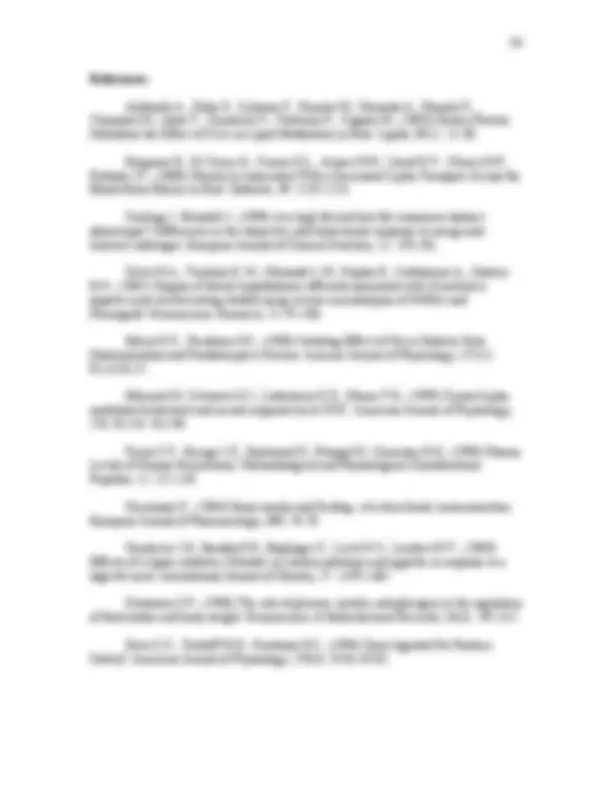
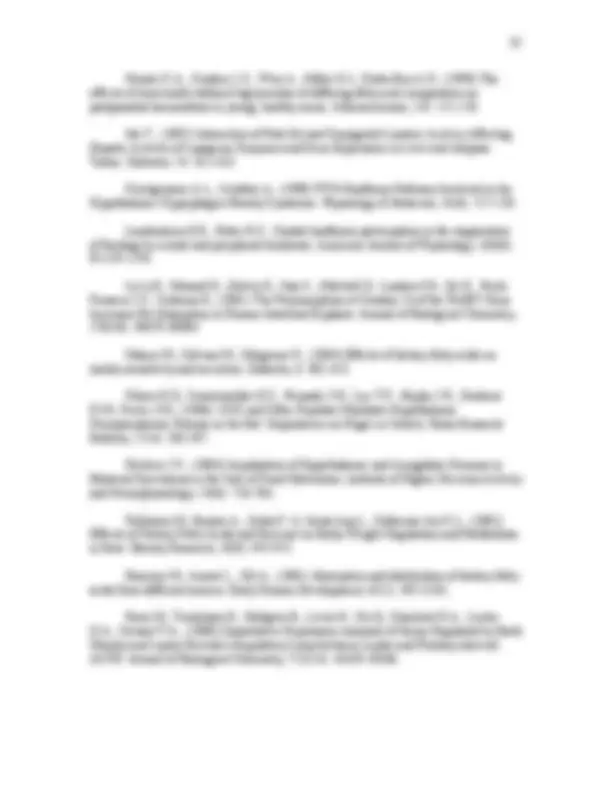
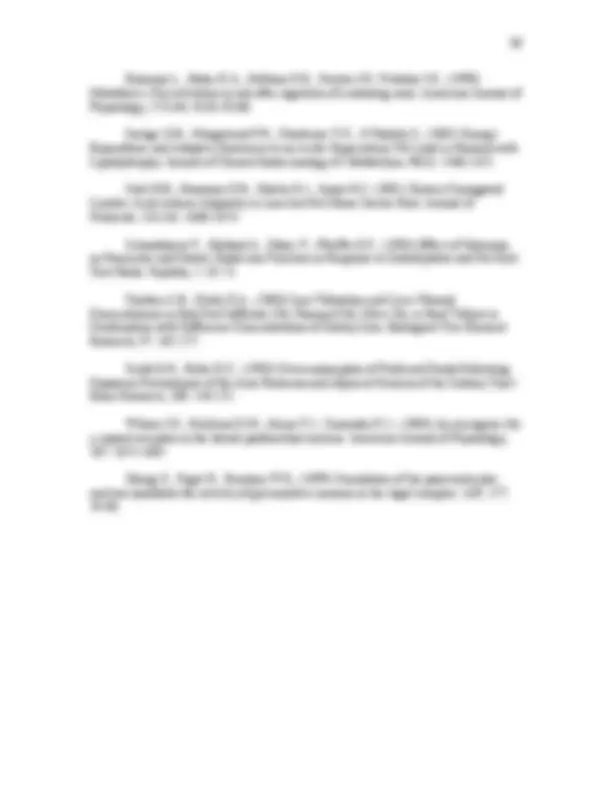


Study with the several resources on Docsity

Earn points by helping other students or get them with a premium plan


Prepare for your exams
Study with the several resources on Docsity

Earn points to download
Earn points by helping other students or get them with a premium plan
Community
Ask the community for help and clear up your study doubts
Discover the best universities in your country according to Docsity users
Free resources
Download our free guides on studying techniques, anxiety management strategies, and thesis advice from Docsity tutors
The physiological responses to different types of dietary fats, particularly conjugated linoleic acid (cla), and their impact on insulin release, glucose levels, and obesity. The digestion process, the effects of various oils on fat pad mass, and the role of proteins and genes in fat absorption. It also touches upon the relationship between insulin sensitivity, cell membrane composition, and dietary fatty acids.
Typology: Papers
1 / 36

This page cannot be seen from the preview
Don't miss anything!





























The Influence of Ingested Dietary Fat and Its Affects on the Gut and Brain Ashley AdamsonFall 2005
A Critical Literature Review submitted in partial fulfillment of the Requirements for the Senior Research Thesis.
Abstract Obesity and overeating affect many functions of the body including increasing amounts of certain hormones and the storage of fat. Digestive processes influence the digestion and absorption of fats in the gut and these functions can be altered when overeating occurs or a person is obese. The type of fat and the length of a fatty acid chain also contribute to a person’s ability to digest and store fat appropriately. Physiological responses to fatty acids, the release of insulin and regulation of glucose levels are different in obese people. There are also specific receptors that, when activated or inhibited, can alter physiological responses as well. Many areas of the brain have been shown to be involved in feeding behaviors and to regulate the amount of food ingested during a meal. The hypothalamus, nucleus of the solitary tract, area postrema, and paraventricular nucleus are a few of the important areas of the brain that can be modified by obesity and overeating. Peptides, neurotransmitters, and lesions are able to reverse or excite the functions of the brain that regulate food ingestion. Research is being conducted to try to understand the importance of how dietary fat influences digestive behavior. This paper reviews each of these aspects of the above influences on that ingestion of fat.
contents with various secretions and move the contents not secreted from the large intestine to the anus through a process called motility. The GI tract is made to absorb as much of any particular substance as possible in order to provide the body with nutrients; however, it does not regulate the amount of nutrients absorbed or the amount of nutrient concentrations in the internal environment. Regulation of the absorbed nutrients is primarily the function of the kidneys. Therefore, small amounts of certain metabolic end products are excreted via the anus because the majority of ingested material is either digested or absorbed. The GI tract has its own local nervous system known as the enteric nervous system. The neurons either synapse with other neurons in the myenteric and submucosal plexus or end near smooth muscles in order to regulate digestion and release neurotransmitters such as nitric oxide and ATP. Neural reflexes occur independently from the CNS, but there are nerve fibers from the autonomic nervous system that form branches with the intestinal tract and synapse with neurons in both plexuses. Although commonly thought, not all neural reflexes are initiated by signals with in the tract; hunger, emotional state, the sight and the smell of food have significant effects on the GI tract and are mediated by the CNS through the autonomic nervous system. Hormonal regulation controls the GI system by primarily secreting endocrine cells throughout the epithelium of the stomach and small intestine. The main hormones that act on the GI system are secretin, cholecystokinin (CCK), gastrin, and glucose-dependent insulinotropic peptide which exist in the CNS and gastrointestinal plexus neurons. Each of these hormones participates in the feedback control system that regulates the GI
luminal tract partially as well as multiple target cells. The actions of these hormones will be discussed later in the appropriate sections. Areas of the brain are also involved in regulating the GI tract as well as controlling sensations of hunger and satiety when eating and digestion occurs. Two primary regions of the brain that regulate the GI tract are the area postrema (AP) and the adjacent nucleus of the solitary tract (NST). Both the AP and NST control ingestive behavior; the AP is permeable to blood-borne signals of nutritional status and both the AP and NST receive primary sensory terminal ions from the abdominal vagus nerve. On the other hand, the NST has a larger output because it transmits its projections to its areas of gustatory processing. Damage to either of these brain regions will produce over consumption of palatable foods (South and Ritter, 1983). The medial hypothalamus (MH), paraventricular nucleus (PVN), and ventromedial hypothalamic nucleus (VMN) are also involved in ingestive behaviors. Damage or lesions to any one of these areas will produce overeating and obesity because the feeding inhibitory pathway is destroyed (South and Ritter, 1983). Section I: Dietary fat absorption/digestion The types of fat influence the body’s ability to digest or absorb food; digestive processes also play an important role. Many different digestive processes affect the absorption and distribution of dietary fatty acids, such as being lipids. The chain length of free fatty acids influences the absorption; long chains are more easily absorbed than short chains. Conjugated linoleic acid is a component whose interactions with various dietary oils are being studied in order to determine how digestion is influenced by the conjugated linoleic acid. Dietary fish oil is shown to increase adipose tissue weight when
Chain length of free fatty acids influences its absorption ability. Unsaturated fatty acids and medium-chain fatty acid are more efficiently absorbed than long-chain fatty acids. Medium-chain fatty acids are also able to be absorbed in the stomach for use as an energy source. Dietary triglyceride structures influence the fatty acid components because dietary fat is mainly composed of triglycerides. The use of dietary triglycerides with long-chain saturated fatty acids in the sn -2 position illustrates the importance of the fatty acid distribution and fat absorption. Ramirez et al. (2001) stated that structured triglycerides are found to provide new possibilities for designing specific lipids. The lipids hold a particular purpose in human nutrition, including use with malabsorption and specifically with specific diseases. Fat digestion occurs in the stomach first and foremost through catalization by lingual or gastric lipase (enzymes). In humans, gastric lipase is present and facilitates the intestinal phase of digestion- acting as an emulsifying agent. Lingual lipase is mainly present in rodents and originates as oral lipase. Pancreatic esters from gastric lipase and the hydrolase completely hydrolyze cholesterol esters form into free fatty acids and cholesterols. These cholesterol esters have been shown to possibly aid in the digestion of triglycerides that contain long-chain polyunsaturated acids. It is evident that dietary phospholipids also absorb and enhance total fat absorption as well as influence the composition and metabolism of lipoproteins. Specifically, as absorbed lipids are re- esterified to form new triglycerides and phospholipids in the smooth endoplasmic reticulum, the triglycerides are able to be synthesized via 2-monoglycerides (M. Ramirez et al., 2001).
The affects of conjugated linoleic acid on obesity were first studied in the middle 1990’s (M. B., Sisk et al., 2001). Interactions with various dietary oils have been investigated in order to determine how digestion is interrupted. Ide (2005) studied dietary fish oil and conjugated linoleic acid interaction. In this situation, mice have a diet made up of 1.0% conjugated linoleic acid. This diet exhibits a great decrease in adipose tissue weight, and serum concentrations of leptin and adiponectin. Conjugated linoleic acid occurs naturally in dairy products and increases energy expenditure and mRNA levels of lipogenic enzymes in the liver. Because of these increases, a down regulation of the expression of adipoctye genes occurs and an increase in serum insulin concentration leads to larger increases in triglyceride levels. This experiment hypothesized that a conjugated linoleic acid-dependent increase in hepatic lipogenesis was the result of a substantial reduction in fat pad mass instead of a direct influence of conjugated linoleic acid on the sterol regulatory element binding protein-1 pathway. The fact that white adipose tissue plays a crucial role in metabolizing and converting glucose to fatty acid storage, which influences the slowing of glucose metabolism in the body from the large decrease in fat pad mass caused by conjugated linoleic acid (Ide, 2005). Dietary fish oil increases adipose tissue weight while conjugated linoleic acid decreases the weight by approximately ten percent (Ide, 2005). Conjugated linoleic acid is usually shown to profoundly decrease body fat mass. In this study, it is 10 trans , 12 cis - conjugated linoleic acid and enhances in lipogenesis that is responsible for the reduction in fat pad mass. However, as the combination of conjugated linoleic acid and fish oil interact to increase mRNA levels (conjugated linoleic acid alone reduces mRNA levels) in the liver, the expression levels in the liver were considerably lower than those in
fat diet will normally result in obesity in animals and humans. Saturated fatty acids produce higher rates of weight gain when compared with other fatty acids. Polyunsaturated fatty acids are negatively correlated to induce an increase in body fat in humans or to cause obesity in mice and/or rats. When exercise is combined with a high fat diet, there are positive effects in regard to decreasing the amount of weight gain and absorption of fat, as well as minimize insulin resistance caused by a high fat diet. It is found that soybean oil-fed and palm oil-fed rats weigh significantly more than the fish oil-fed rats. However, fish oil-fed fats have much more body fat mass than the control group. These results signify that there is still weight gain (M. Pellizzon et al., 2002). As expected, insulin levels in the fish oil group are much lower than the palm oil or soybean oil levels and exercise significantly reduces body weight in the fish oil and palm oil groups,. This is expected because exercise reduces internal fat storage in the body. The fish oil diet reduced weight gain as well as fat accumulation because it contains polyunsaturated fatty acids compared to soybean oil (highly saturated fatty acid) that increased fat mass in subcutaneous regions. The dietary fatty acid composition is notably interrelated to cell membrane fatty acid composition because the degree of unsaturation in muscle membrane fatty acid is a determinate of insulin sensitivity. A greater degree of unsaturation index is measured in the fish oil-fed rats indicating why this group has higher insulin insensitivity. In conclusion, fish oil-fed rats have a better response to exercise than the other two groups because of the fish oils long polyunsaturated chain. (M. Pellizzon, 2002). Iron absorption and utilization decreases when a diet is higher in polyunsaturated fatty acids than with diets with higher saturated fatty acids. This situation is seen in
humans as well as animals with iron deficiencies. A study by Shotton and Droke (2003) examines the affects of diets varying in (n-3) and (n-6) polyunsaturated fatty acids (safflower and flaxseed oil) with a diet higher in (n-9) monounsaturated fatty acids (olive oil) or saturated fat (beef tallow) on iron utilization. The data illustrates that iron utilization and plasma iron are only affected by dietary iron because with more iron in the diet, there is more hemoglobin. However, the results are not statistically significant. Flaxseed oil and olive oil may have an influence on iron status and utilization, and these changes possibly will be related to modifications in iron absorption or fatty acid composition of cellular membranes (Shotton and Droke, 2003). Conjugated linoleic acid has also enhanced T cell function and proliferation and increases production of inerlukin-2. Interleukin-2 is a hormone-like substance that can improve the body’s response to disease. The reduction in weight of fat pads is not the reduction of the fat cell number, but rather the reduction of the cell size. In a study by Sisk et al. (2001), conjugated linoleic acid increased fat pad weight in rats with an obese genotype but reduced fat pad weight in lean rats. This interaction decreased the average cell size of lean rats and increased the average cell size of obese rats. As a result of greater rates and contribution of lipogenesis to depository lipids, the obese rats had greater amounts of palmitic, palmitoleic, and oleic acids in their fat pads. The conjugated linoleic acid causes the obese rats to increase the proportions of large cells and decrease small cells. This action accounts for the increase in fat pad weight; the lean rats have the opposite effect (increase in smaller cells with a decrease in large cells). Also, the tissue levels of conjugated linoleic acid are lower in the obese rats. This observation is assumed to be another reason for the dilution of fatty acids into the larger pad. However, it is
basis in lean vs. obese rats, the amount of conjugated linoleic acid was higher in obese rats (Sisk, 2001). A gene that is thought to play a significant role in the absorption of dietary fatty acids is a polymorphism at codon 54 of the fatty acid-binding protein-2 gene. The influence of the intestinal fatty acid-binding protein polymorphism to stems from the Thr- encoding allele on the gene. This process is linked with the increased secretion of triglycerides and small intestine lipid absorption without modifying glucose uptake or metabolism. In a study by Levy et al. (2001) the polymorphism in the fatty acid binding protein-2 gene and its relationship with intracellular lipid transport was investigated. The Thr-encoding allele was also studied to determine its influences on lipid esterification, secretion of lipoproteins, and also glucose uptake and metabolism. The intestines are the critical site for the transport of alimentary fat in the form of lipoproteins which are eventually packaged as chylomicrons. The absorption and translocation of lipolytic proteins from the endoplasmic reticulum occurs due to the actions of fatty acid-binding proteins and lipid esterification (Levy et al., 2001). The Thr encoding allele exhibited greater absorption for long-chain fatty acids as compared to intestinal fatty acid-binding proteins (Levy et al., 2001). The allele is associated with insulin resistance and enhanced fat oxidation rates- a factor that contributes to type II diabetes in certain rats. The aim of the study done by Levy et al. (2001) was to investigate the relationship between polymorphisms of intestinal fatty acid- binding proteins and intracellular lipid transport in the human intestine. The study suggests that chylomicrons are the predominant lipoprotein particles that are influenced by the intestinal fatty acid-binding protein polymorphism. Higher levels of lipid
synthesis were found when the Thr-54 fatty acid binding protein was expressed. Increased availability of free fatty acids from chylomicron degradation, with a fatty acid- binding protein polymorphism, affected the intermediary metabolism. This process means that high plasma concentrations of free fatty acids decrease the rate of insulin- stimulated uptake of glucose in skeletal muscles and therefore, leading to an overall increase in insulin resistance (Levy, 2001). Satiety and decreased food intake in diabetic rats causes the fat content in a meal (Edens & Freidman, 1988). These effects are not seen in normal rats when fat is added to their meals. This physiological effect was tested by Edens and Freidman (1988) by examining the effects of ingested corn oil with a meal, gastrointestinal fill, and plasma triglycerides, glycerol, and ketone bodies. The corn oil used was a form of vegetable oil in order to increase the fat content of the meal. Diabetic rats have increased capacity to oxidize lipid fuels which underlies their sensitivity of satiating effects of fat. Triglyceride levels were ten times higher in diabetic rats than in normal rats, and the levels triglyceride levels were increased more after oil ingestion (Edens & Freidman, 1988). Plasma glycerol and plasma ketone levels were also elevated in diabetic rats after oil ingestion. This action confirms that gastric emptying accelerates and intestinal mass contents increase in diabetic rats. The oxidation of fatty acids has the ability to reduce or suppress eating (Edens & Freidman, 1988). It is also possible that gastrointestinal controls are involved as diabetic rat’s exhibit gastrointestinal clearance of nutrients. This may contribute to their hyperphagia and fat in the digestive tract with delays in gastric emptying; decreasing the amount of feeding. In this study, oil decreased the feeding in the diabetic rats. Contents in the first
and utilization decrease as opposed to increases with diets high in saturated fatty acids. Dietary proteins, such as soy proteins are also a promising component of weight loss. The proteins are studied further because of their influence with significant reductions in fat weight, triglycerides, cholesterol, glucose, and insulin levels. Other physiological effects, for example, diabetes in rats is caused by a decrease in food intake in response to fat in a meal. Gastrointestinal controls of decreased food intake are also seen in diabetic rats. Section II: Physiological Response The physiological responses of fatty acids, insulin, and glucose, play important roles in the metabolism of mammals and humans. Leptin regulates food intake and energy balance. However, leptin levels are elevated quickly due to its receptors at the blood-brain barrier low saturation level. This low saturation level of specific leptin receptors in the blood-brain barrier regulate the amount of leptin allowed, causing increased obesity. Leptin also reduced the mRNA levels of specific genes that are normally increased in obese mice. Orlistat, a lipase inhibitor, is said to reverse the effects of CCK, increase caloric intake, and reduce feelings of satiety. High levels of neurotensin is another way of increasing fat in a diet and how it is related to weight gain. Finally, the way that haemostatic functions and dietary fat interact with each other to cause dietary lipids can modify haemostatic functions. Insulin and glucose both play a role in the metabolism of mammals and humans. Their influence on hunger and satiety are displayed as their levels rise and fall before and after an ingested meal. Both insulin and glucose levels rise during the consumption of a meal and gradually decline during the digestion of the meal (Grossman, 1986). Diets rich
in saturated fatty acids increase insulin resistance while polyunsaturated fatty acids prevent insulin resistance by increasing membrane fluidity and GLUT4 transport. Membrane fluidity is how easily materials are able to pass through or transport other items through the cell membrane. Insulin resistance is the ability of ones body to produce insulin with an inability for their bodies to respond to the action of insulin. Humans portray acute and prolonged effects of fatty acids on glucose-stimulated insulin secretion. Humans also portray the effect of a high-fat diet on insulin sensitivity and secretion can result in the development of type II diabetes (Manco et al., 2004). By suppressing lipolysis and lipid oxidation in obese humans, insulin resistance contributes to the inability to remove lipids. In rats that are fed a high fat diet, the insulin-stimulated glucose uptake ability is impaired in both fat and muscle. Many studies have been conducted to improve the knowledge of this subject. It was found that a daily intake of a diet with fat high in saturated fatty acids may lead to insulin resistance and eventually to type II diabetes in subjects with a genetic predisposition (Manco et al., 2004). Leptin increases appetite and food intake. If leptins concentrations decrease, weight loss is likely to occur. Adipocytes secrete leptin into the bloodstream in order for leptin to gain access to the hypothalamus and regulate energy balance and food intake. Obese humans have greatly elevated plasma leptin concentrations compared to lean humans. The elevated concentrations of leptin cause saturation of its receptors at the brain barrier and decreased transport of leptin into the brain in obese rats (Burguera, 2000). Besides the hypothalamus, leptin also affects functions of peripheral organs involved in maintaining body composition and mediators of appetite control. In rats,
appetite control. CCK mimics the postprandial state, a reduction of caloric intake, causing a decreased food intake and increased fullness. Its receptor antagonist, CCK-A (Orlistat), stimulates caloric intake and delays the feelings of satiety. When administered, Orlistat should stimulate caloric intake and hunger while delaying the feelings of fullness. An experiment investigated the effect of oral administration of Orlistat on plasma CCK release and measured of behavioral satiety and hunger when presented a high-fat meal. The results indicate that Orlistat does not significantly alter hunger, satiety, or prospective consumption. Alternate conclusions have been given on the significance of CCK and its interaction with obesity. First, the protein content of the meal can act as a factor for CCK secretion and second, variability of CCK is increased in the trials, which is explained by the amount of body fat present and not weight. This provides support for previous research which demonstrates that overweight and/or obese subjects exhibit instances of insensitivity to the satiating effects of fat with a low response to CCK (Goedecke et al., 2003). Decreased leptin transport across the blood-brain barrier indicates another way in which obesity can occur. The permeability of leptin and the blood-brain barrier in homozygous lean rats, high fat diet-induced obese rats, and genetically obese rats was investigated. The data displays the permeability coefficient surface area product for the residual plasma volume. This action is consumed by leptin in the vessel bed of different brain regions. The transport of leptin into the central nervous system represents a crucial step in the regulation of food intake and energy balance. Obese rats and high fat diet- induced obese rats have a deficit in leptin access into the brain through the blood-brain barrier. This fact indicates a cause for their obesity. Leptin levels in lean individuals are
already near saturation levels at the blood-brain barrier; therefore, leptin levels measured in obesity may not have biological effects because the system is already saturated (Burguera et al., 2000). The specific leptin receptor (OB-R) allows leptin access through capillary walls to specific hypothalamic nuclei, as well as other areas in the brain, in order to exert its effects. This leptin receptor in the blood-brain barrier is easily saturated; the reduction of leptin uptake in obese rats is due to the increase of competition and resistance of endogenous leptin. When compared to cerebrospinal fluid levels of leptin, plasma leptin levels are much higher in obese individuals. The lack of leptin access to the brain could be responsible for obesity. The plasma concentration of leptin in lean individuals does not have such competition or decreasing leptin transport through the blood-brain barrier (Burguera et al., 2000). Hyperleptinemia is a form of obesity caused by naturally high levels of leptin. Higher leptin receptor levels at the blood-brain barrier in response to high-caloric intake could be a physiological response to allow increased leptin access to specific hypothalamic/pituitary areas associated with growth and reproduction. The decreasing permeability at the blood-brain barrier might be secondary to the higher levels of circulating leptin in obese groups. The leptin receptor is involved in the regulation of leptin availability to brain cells. Its functions are limited due to saturation because of hyperleptinemia. This study agrees with the conclusion that the presence of saturable transport mechanisms in the blood-brain barrier and explains why obesity is caused by a significant increase in plasma leptin levels (Burguera et al., 2000).